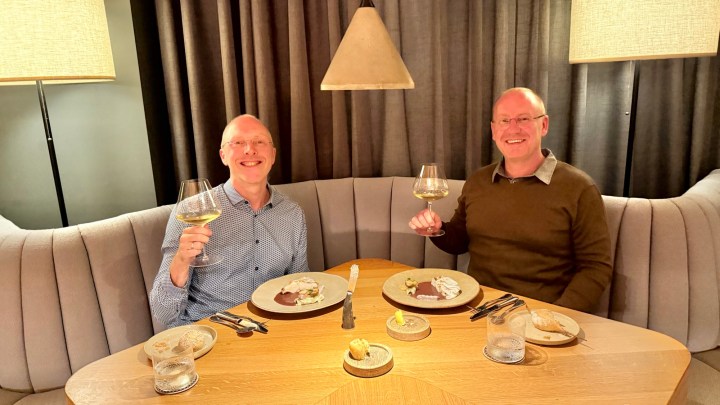
To celebrate my friend Robert’s birthday, I took him to one of my favorite restaurants in Amsterdam: 212, led by chef Richard van Oostenbrugge. I’ve been a fan of his cooking ever since my first visit to Bord’Eau in 2013 (read about that here), the former restaurant in Hotel de l’Europe where Richard was head chef. Back then it had just one Michelin star, but I predicted a second—and indeed, it was awarded a few months later. In 2018, Richard opened his own restaurant at Amstel 212, regaining two stars in 2021.
Since my last visit, sommelier Sjoerd Hartog has been promoted to restaurant manager, and a new sommelier has joined the team: Thomas Blokdijk, who brings experience from Librije’s Brass Boer on Bonaire.

At 212, the dining room and kitchen share the same space, with the kitchen functioning as a theatrical stage. (What you see is the ‘finishing’ kitchen; most of the prep work is done in a larger kitchen downstairs.) It’s as if every table is a chef’s table. You can watch the kitchen in action while you dine, and the chefs themselves serve and finish the dishes at the table. This creates a relaxed, informal atmosphere that distinguishes 212 from more traditional fine dining establishments like Ciel Bleu.

The restaurant offers a five-course chef’s menu (€268) or à la carte (three courses for €258 or four for €328, with a selection of six starters, five mains, cheese, and three desserts). Many of the dishes on the chef’s menu were ones I had already enjoyed in 2023 and 2024, but Sjoerd kindly offered substitutions with dishes I hadn’t tried before. We opted for the wine pairing (€148).
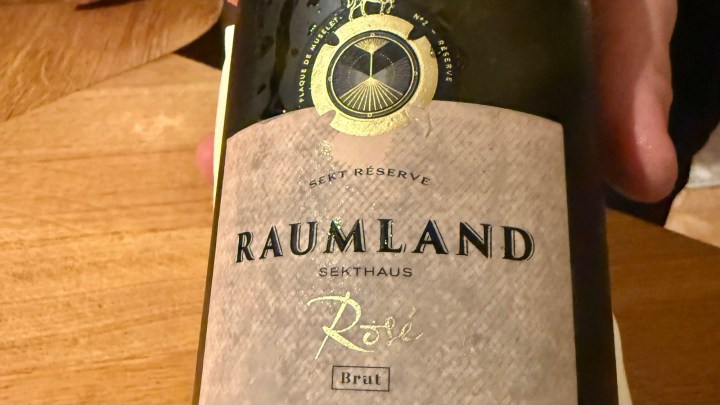
From the three sparkling wines available by the glass, I chose the 2015 Rosé Reserve Sekt from Sekthaus Raumland, aged over 90 months on the lees. Despite the low dosage of 4 grams per litre, it was impressively well-balanced. With the sekt we enjoyed the delightful series of amuse-bouches, which was the same as in 2024.
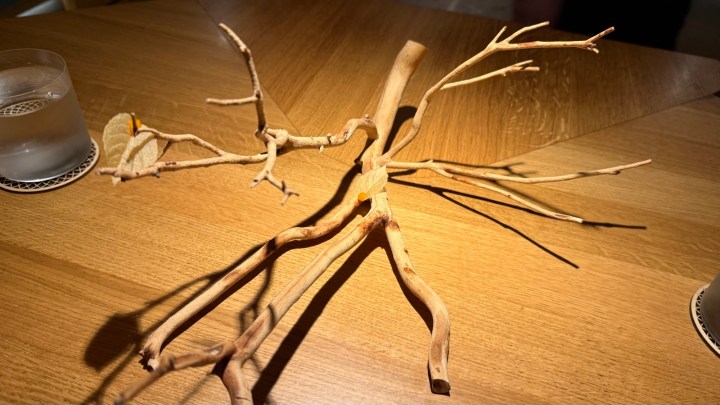
The ‘leaves’ were made of celeriac this time.
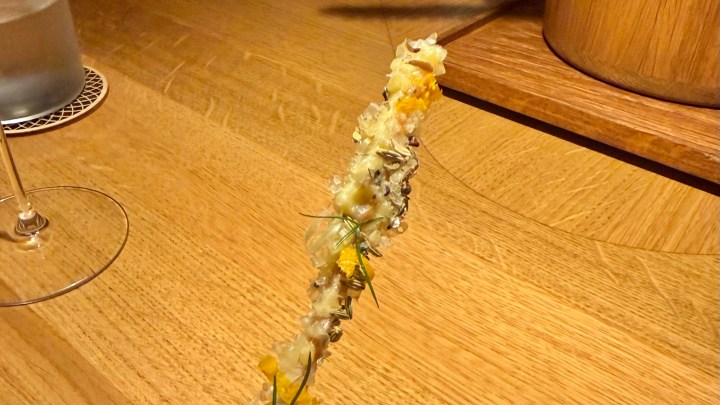
The bread stick with fennel seeds, orange zest, and aged Beemster cheese was as delicious as ever.
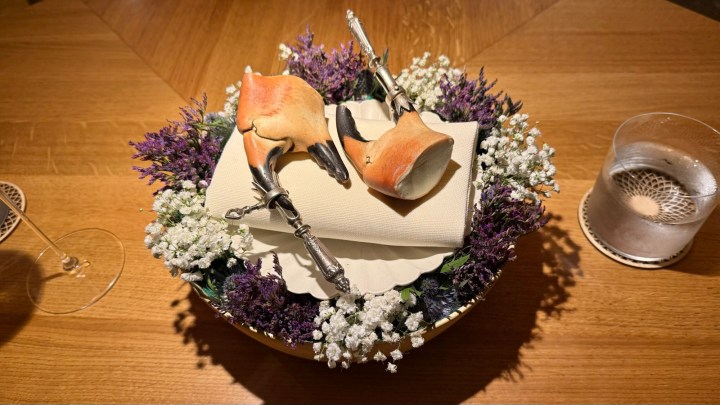
Brown crab with lavender and sour cream.

Our favorite: shii take with foie gras and umeboshi: a flavor explosion in the mouth.
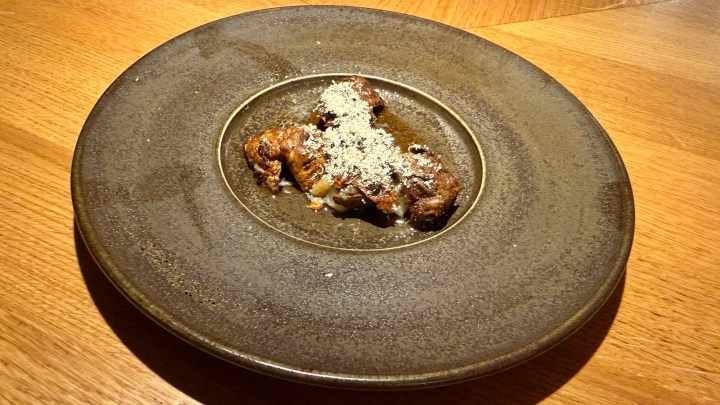
And finally, a crunchy sunchoke filled with sunchoke salad, garlic vinaigrette, and Dutch shrimp, topped with grated Belper Knolle cheese.

The first wine in the pairing was the 2021 Schiefergestein Bockenauer Riesling by Schäfer-Fröhlich, from slate-rich terroir in Nahe, Germany. Crisp and vibrant, with a lovely petrol note.
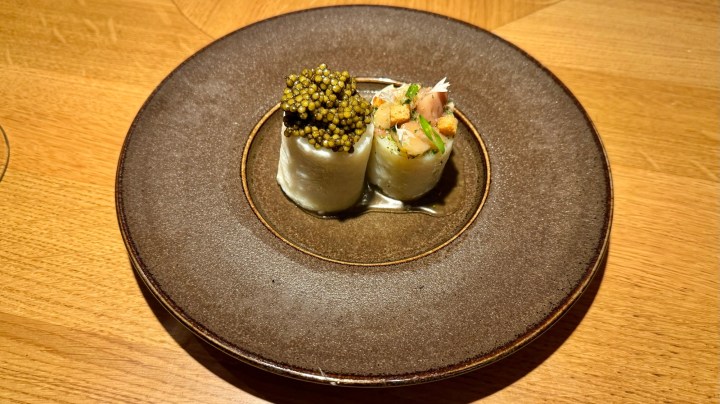
This was a good pairing for a chef’s classic (which I already enjoyed as an amuse-bouche in 2013): a potato shaped like a hollow bone, filled with veal tartare ‘marrow’, and topped with caviar and smoked herring. Visually striking and packed with flavor. The wine paired best with the caviar; a creamier wine would have complemented the other components more effectively.
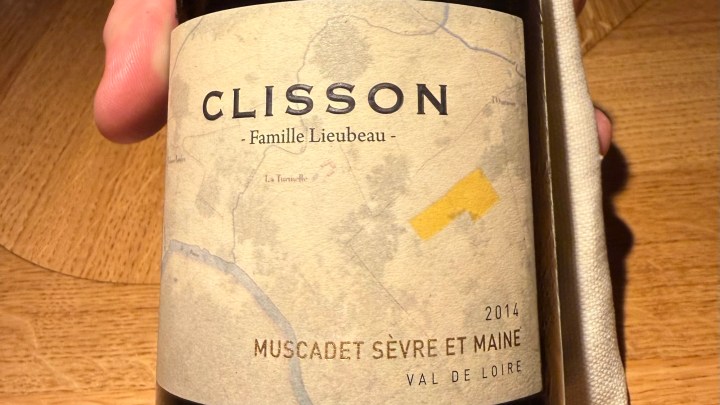
The next wine was a 2014 Muscadet by Clisson. Although Muscadet isn’t typically known for its aging potential, this bottle had matured beautifully and remained vibrant.
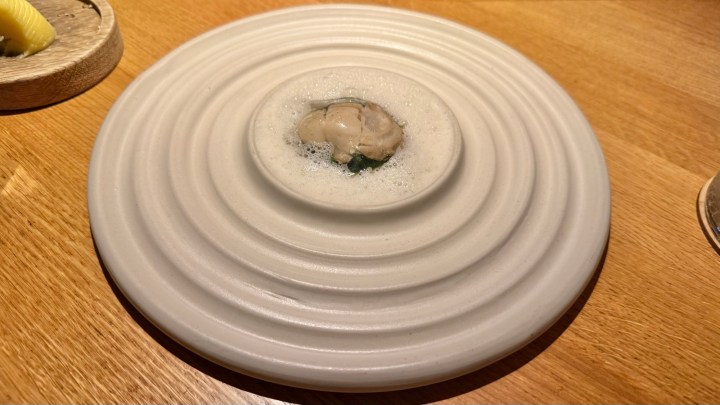
It was an excellent pairing for an excellent dish: an ‘open ravioli’ of oyster with kale, preserved lemon, and oyster jus (which the chef told us included many more ingredients from the North Sea to achieve its complex and balanced flavor). The ‘open’ ravioli was what Italians sometimes call a ‘naked’ ravioli—just the filling, without any pasta. The combination of the salty, creamy oyster with the crunchy, slightly sweet kale was simply divine. Muscadet is a natural choice for a dish that evokes the sea (in the best possible way), but a young Muscadet would have been too sharp for the creamy texture. A smart move by the sommelier to select a mature one.
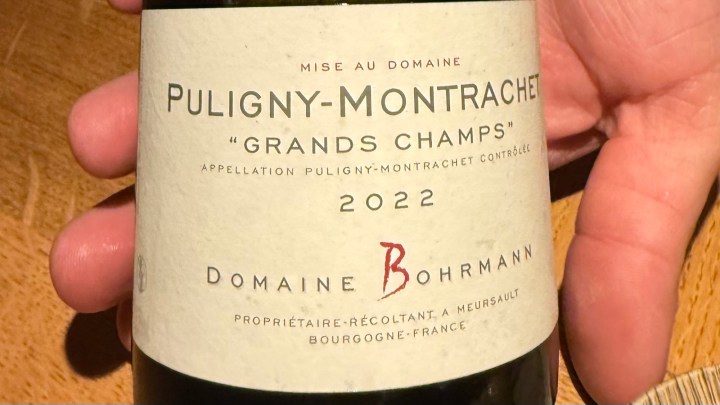
From the moment I realized we were going to have turbot, I had been looking forward to pairing it with a white Burgundy (which I love). So when Thomas arrived with a chilled Mencía from Spain, I thought: that’s not going to happen. Not just because I had white Burgundy in mind, but also because I’ve had too many disappointing experiences with sommeliers trying to incorporate more reds into pairings by serving them chilled. I may have been a bit hasty in refusing the Mencía without tasting it with the dish. Thomas kindly brought out a 2022 Puligny-Montrachet by Domaine Bohrmann at my request, which had a lovely body and aroma.

It was a very good pairing for the grilled turbot with jus Bordelaise, fresh porcini mushrooms, and a gratin of veal bone marrow. I hadn’t realized the turbot would be served with a red wine sauce, which of course made it suitable for a red wine pairing—though I would have preferred a red Burgundy over a Mencía. The Puligny held its own thanks to its body; a more mineral-style Puligny would have been overpowered by the sauce. The dish was excellent, especially the rich and silky meat from the side fin.
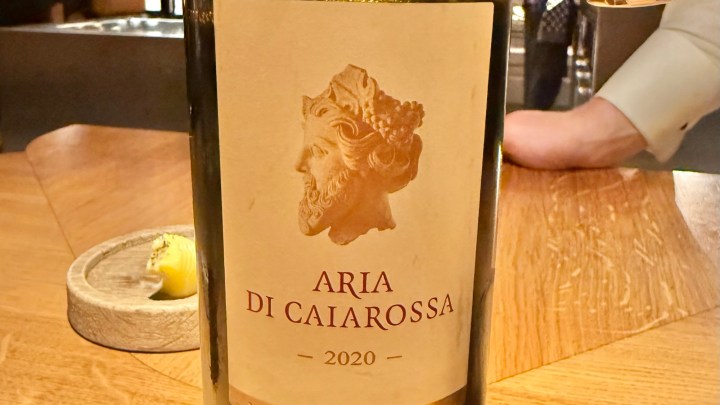
The fourth wine was the 2020 Aria di Caiarossa, a blend of Merlot, Cabernet Franc, Syrah, Cabernet Sauvignon, and Grenache from Tuscany, Italy. Wines from the area around Bolgheri are often considered a Tuscan take on Bordeaux, and this winery follows the Bordeaux tradition of producing a ‘second’ wine from grapes not selected for the flagship Caiarossa. Despite being a second wine, it was very enjoyable, with aromas of dark fruit and silky tannins.
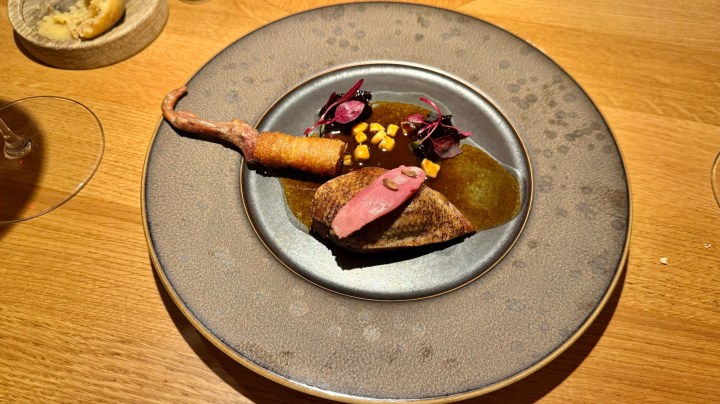
This was a very good pairing for the pigeon breast, stuffed under the skin with olive tapenade, served with rehydrated beetroot, the leg as a croquette, and a jus made from pigeon offal. The dish was intensely flavorful, with the breast perfectly cooked and tender.
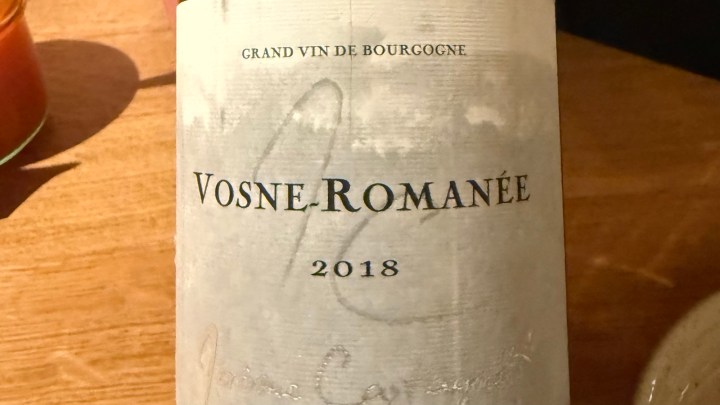
We had noticed the cheese cart at other tables, and it looked like an impressive selection. Unlike the typical approach most restaurants take—and most guests seem fine with—I prefer to select cheeses with a single flavor profile, so they can pair well with one wine. No wine pairs perfectly with all cheeses, from goat to blue, and having multiple wines with the cheese course is rarely an option. I asked if there was any nice red Burgundy available by the glass, and Thomas mentioned he had some 2018 Vosne-Romanée left. That sounded excellent, so we ordered two glasses and waited for the cheese cart to arrive. Given the generous-looking selection, I expected cheeses like Emmental, Morbier, Comté, or Gruyère—cheeses that pair beautifully with red Burgundy.
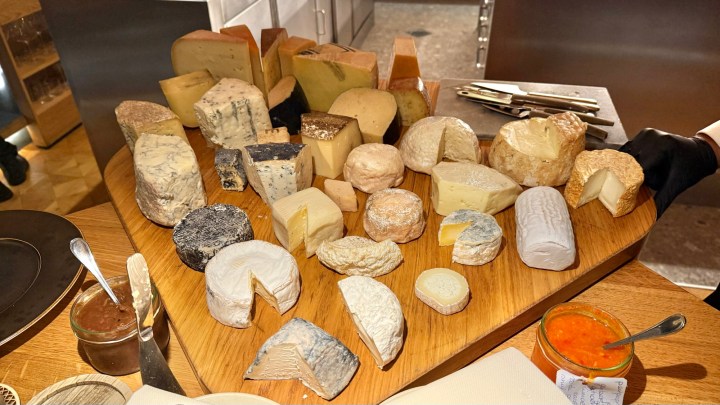
It has been a trend for some time for restaurants to focus on serving local products, and as a result, many fine dining restaurants in the Netherlands now offer only Dutch artisanal cheeses—often inspired by French originals—rather than actual French cheese. This was also the case at 212. Since these cheeses are produced in small quantities, they’re not widely available, and I’m not familiar with most of their names. Usually, it works to ask for something by referencing the French original. But as you may have guessed from this introduction, I drew a blank when I asked the fromagier for anything resembling Emmental, Morbier, Comté, or Gruyère.

He did come up with some suggestions, and it was excellent service that he allowed us to taste small samples with the wine before deciding. Unfortunately, they all clashed with the wine. In the end, we managed to find five cheeses that paired very well with the wine by describing the type of cheese we were looking for—hard but mildly flavored—and selecting cheeses the fromagier initially thought wouldn’t work, but actually did. I felt a bit sorry for giving him such a hard time, but we ended up with a very satisfying result. Next time, I’ll choose the cheese first and then the wine—or stick to something simpler, like blue cheese with sweet wine.
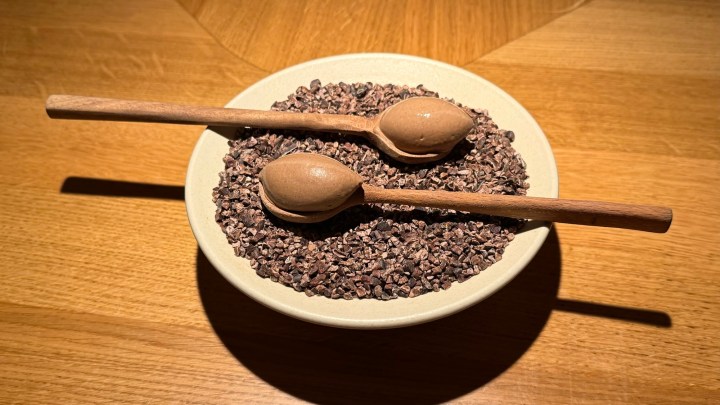
The dessert amuse was the same as last year: roquefort and chocolate ice cream.

The dessert wine was a 2021 Muskat Ottonel Auslese by Kracher from Burgenland, Austria. Muscat Ottonel is a lesser-known variety of Muscat, and this example was elegant and fresh, but with enough sweetness to work with the dessert.

The dessert was Mirabelle plums with goat cheese ice cream and rose. The crunchy shell was cracked at the table with a hammer.

The aroma was quite pungent, likely due to the presence of rose.

The meal concluded with an exquisite set of petit fours of exceptional quality to accompany coffee or tea. The baba au rhum, cannelés, and madeleines were perhaps the best I’ve ever tasted.
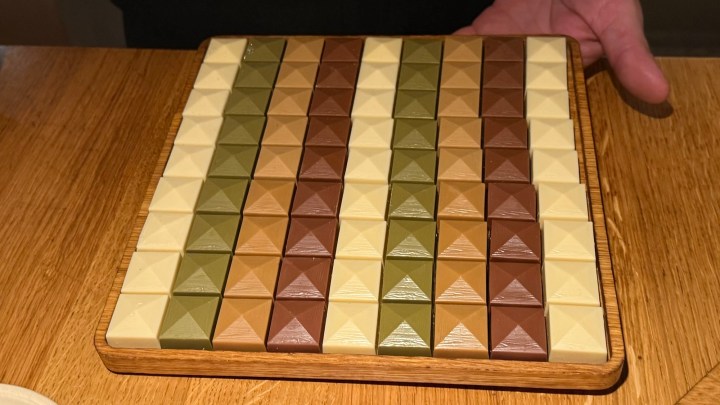
And then there were bonbons as well.
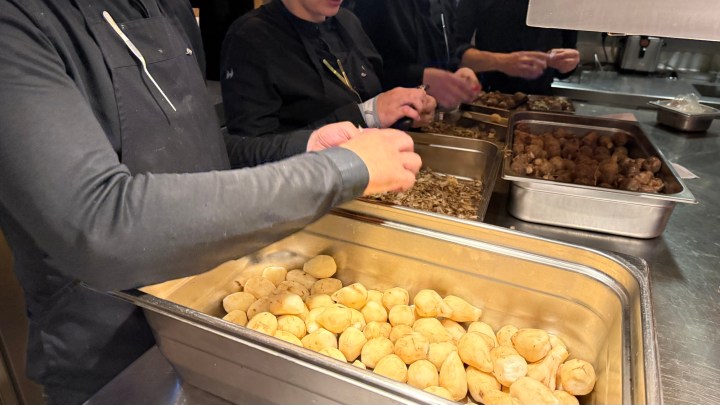
At the end of service, some of the staff were peeling an enormous amount of small sunchokes. Luckily for them, they weren’t as gnarly as sunchokes can often be, but they were small—and there were lots of them.
In wine education, we’re taught to assess wines without factoring in personal preference. Instead, we evaluate whether a wine is “acceptable,” “good,” or “excellent” based on relatively objective criteria like balance, length, complexity, concentration, and aging potential, rather than simply calling it “delicious.” If we apply the same logic to restaurants, then all establishments with two Michelin stars can be expected to be excellent: high-quality fresh ingredients, flawless execution, creative combinations of flavors and textures, and attentive service. But that alone doesn’t guarantee an evening as wonderful as the one I had with Robert at 212.
To truly enjoy a restaurant, there needs to be a match with your personal preferences—whether it’s the style of service (informal or formal), the flavor profile (elegant or bold), or the menu format (à la carte or tasting menu). For me, 212 is a perfect fit, so I’ll keep coming back. The food is delicious, with bold flavors. The wine pairings are thoughtful and well-matched. The service is so attentive that the evening flows naturally, never feeling like you’re waiting. If the menu changed more frequently, I’d return even more often—but I understand that creating dishes at this level takes time, and many of them are so good that it’s no punishment to enjoy them again (and this time everything except the amuse-bouches was new).


Such incredible presentations!!!
LikeLiked by 1 person
Thank you, Stefan! It is breakfast time in country NSW but my mind is very much with you and yours in Amsterdam! A ‘wow’ of a meal beautifully described . . . and, as usual, I have learned matters about food/wine choice and balancing. To pick out just one dish – perchance the bone-shaped potato takes the cake for me 🙂 !
LikeLiked by 1 person
They are all works of art, and if they taste as good as they look, you had a successful and beautiful evening!
LikeLiked by 2 people